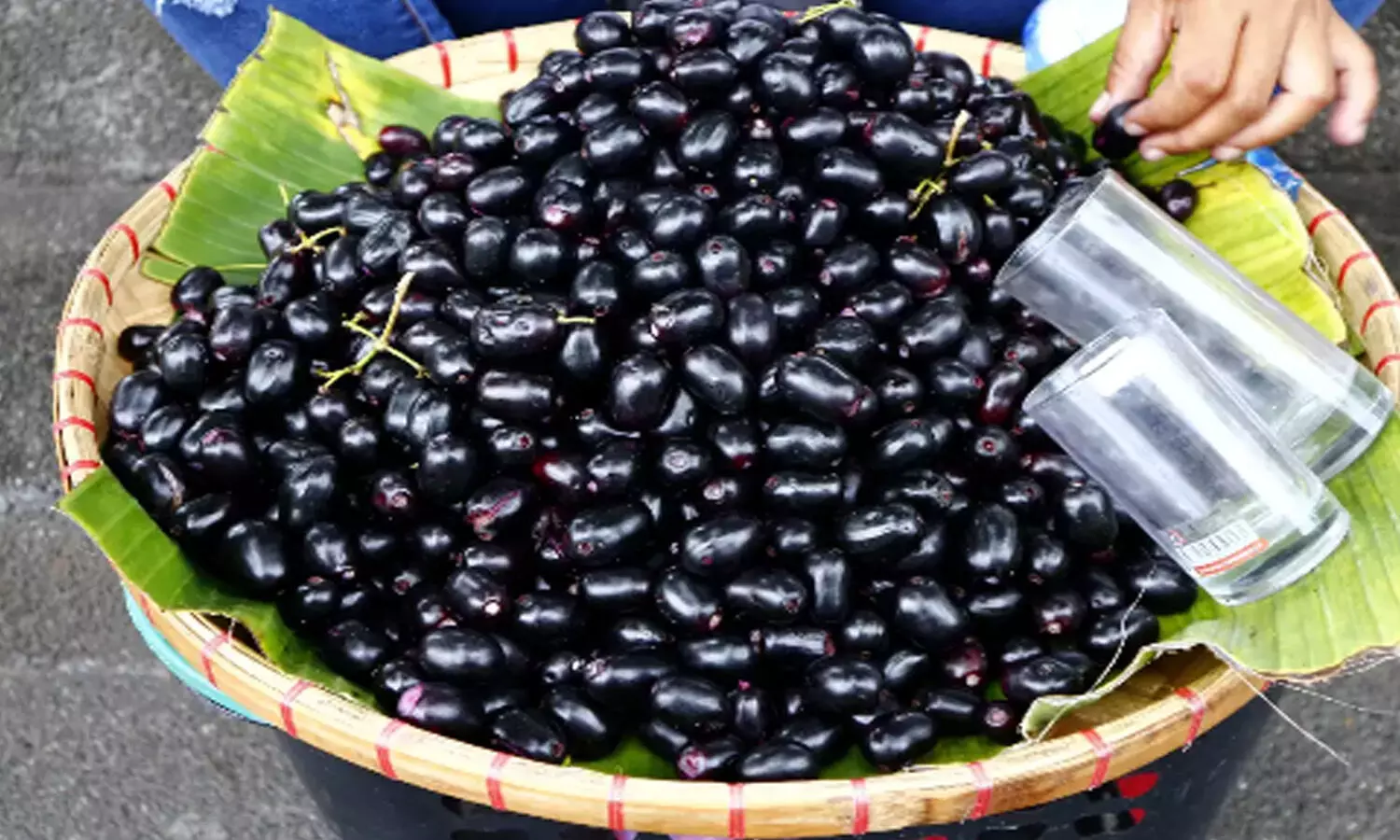TRENDING TAGS :
First jamun export to London motivates exporters and farmers
For the first time, jamun produced in Bithoor (Kanpur) was exported by an APEDA registered exporter in June first week and export is being continued.
PC: Social Media
Lucknow: Since the first consignment export of Jamun from Uttar Pradesh to London, exporters and farmers have been encouraged to profit from this indigenous crop. For the first time, jamun produced in Bithoor (Kanpur) was exported by an APEDA registered exporter in June first week and export is being continued. In recent years, there has been a surge in the popularity of Jamun fruits among Indians and also those living outside the country.
Accordingto Dr. CB Singh, AGM of APEDA, UP Jamun is being welcomed in the London market and there is a lot of potential for exporting this fruit in addition to mango. Quality fruits and packaging technology aided exporters in successfully delivering the shipment to distant markets. Given the demand, there is plenty of room for producing and exporting high-quality jamun fruits to Europe and the Middle East.
Jamunis becoming increasingly popular among the general public due to its anti-diabetic properties. It also contains a high level of vitamin C and antioxidants, as well as a large number of bioactive compounds that are beneficial to human health. The incredible bioactive compounds aid in the improvement of heart health, digestion and gum health. Due to the numerous health benefits of jamun, some jamun enthusiasts enjoy the pulp and grind the seeds to make a powder to consume as a supplement.
Previouslyuninterested exporters are now planning to export this one-of-a-kind fruit to European countries where people will be willing to pay a premium for such a rare and exotic produce. Jamun is a rare fruit in most European markets; as a result, producers and exporters will be able to make a reasonable profit if systematic export of this fruit is encouraged.
The jamun orcharding has not yet been organised. In general, jamun was regarded as an avenue tree, with the majority of the fruit harvest coming from trees found along the roadside. With the potential of Jamun as a future fruit in mind, ICAR-CISH began researching this crop about 15 years ago. Because jamun plants were propagated through seeds, there were no standard varieties. One cannot be certain that the seedlings will produce the same high-quality fruits as the mother tree. As a result, the institute began working on varieties, asexual multiplication techniques, and canopy management. Because the perishable nature of the fruit calls into question the sustainability of large-scale cultivation, the institute developed value-added products from jamun. Surplus production necessitates processing in order to create value-added products.
Alot of jamun grows wild, but it has poor eating quality as a table fruit, but it has exceptional medicinal properties. Wild jamun fruits are smaller in size and have a higher astringency than commercial jamun. These characteristics enhance the health-promoting properties of jamun, which grows abundantly in the forest. Since these trees have gradually vanished as a result of road widening, there is an urgent need to establish orchards of this crop, which is regarded as a future fruit.
As a result of the pre-monsoon rains, jamun fruits are now abundant in the market. Farmers in Gujarat and Maharashtra are able to harvest the fruits earlier and supply them to the Delhi market at a higher price. Uttar Pradesh's jamun is not inferior to that of other states, but other states benefit from their geographic location and climate advantages. At the start of the season, jamun is the most expensive indigenous fruit on the market. People are not afraid to pay 300 rupees for a kilogramme. During the last week of May, it is actually more expensive than premium mangoes.
Jamun is a common fruit in India, but it is considered rare and exotic in European markets. With increased awareness of the health benefits of jamun and increased export opportunities, the area under jamun cultivation will expand. Cultivation of CISH varieties, in particular, in tribal areas will improve their livelihoods while also providing excellent quality fruits for domestic and international market.
Shailendra Rajan, Ph.D.
Director
ICAR-Central Institute for Subtropical Horticulture



